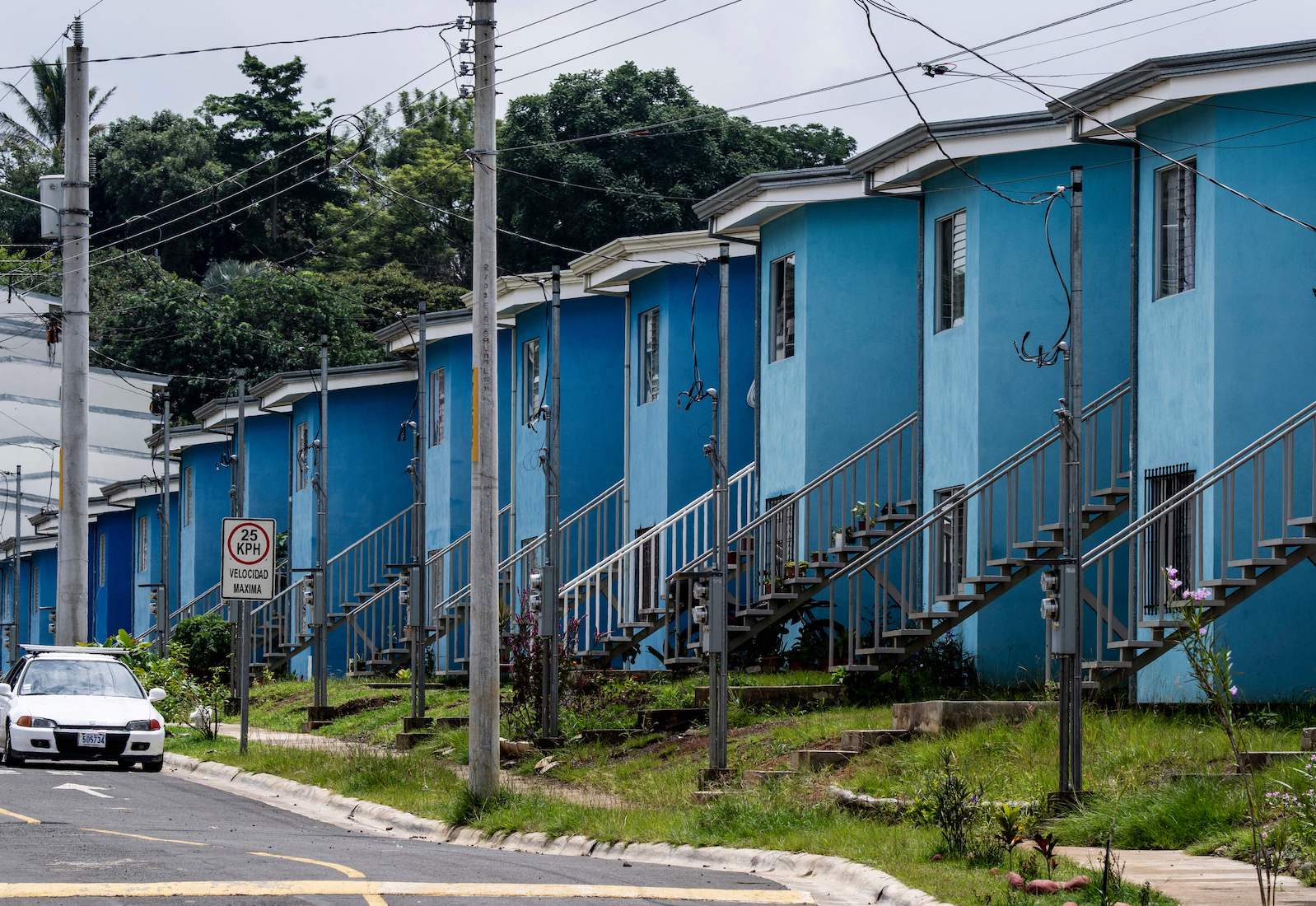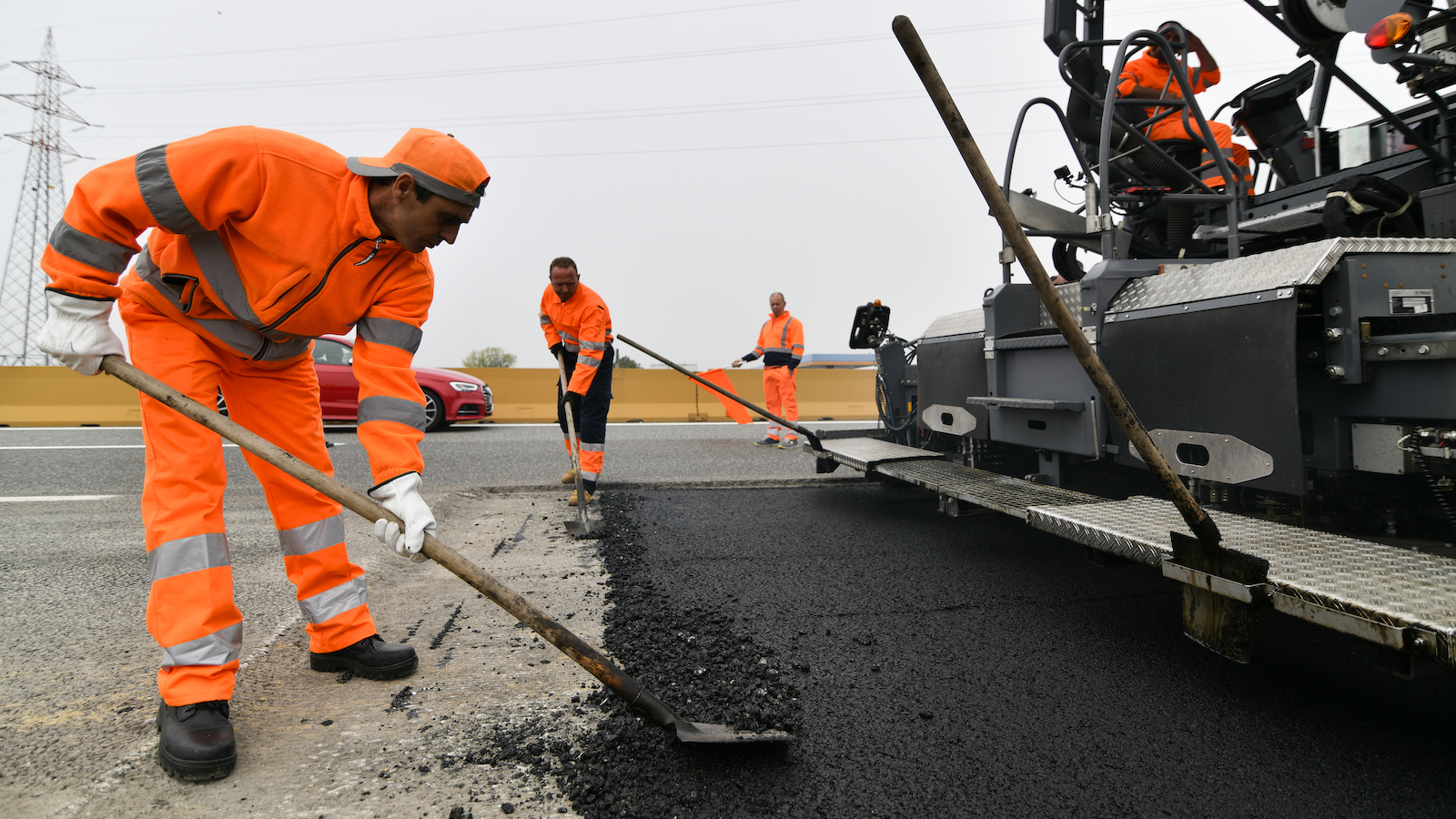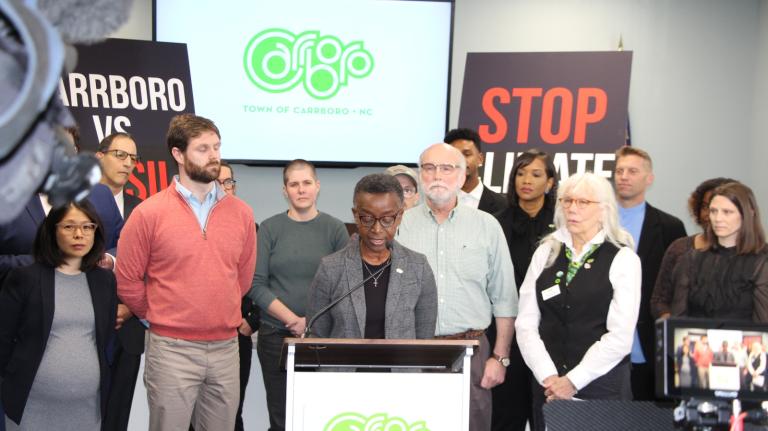Last month, the American Chemistry Council, a petrochemical industry trade group, sent out a newsletter highlighting a major new report on what it presented as a promising solution to the plastic pollution crisis: using “recycled” plastic in construction materials. At first blush, it might seem like a pretty good idea — shred discarded plastic into tiny pieces and you can reprocess it into everything from roads and bridges to railroad ties. Many test projects have been completed in recent years, with proponents touting them as a convenient way to divert plastic waste from landfills while also making infrastructure lighter, more rot-resistant, or, ostensibly, more durable.
“As our nation sets about rebuilding our infrastructure and restoring our resilience, plastic will play an outsized role,” the American Chemistry Council, or ACC, a petrochemical industry trade group, says on one of its websites.
But independent experts tell a much more complicated story, suggesting that most applications involving plastic waste in infrastructure are not ready for prime time. In recent years, several reports and literature reviews have highlighted the unknown health and environmental impacts of repurposing plastic into construction materials. They’ve also warned that post-consumer plastic isn’t desirable for use in many types of infrastructure — and that diverting plastic into construction is unlikely to make much of a dent in the massive tide of plastic waste that the developed world produces. To the contrary, adding used plastic to construction materials could even incentivize more plastic production.
Take a closer look at the 407-page National Academies of Sciences report the ACC highlighted in its newsletter, for example, and you’ll find that it said there has been virtually “no significant research” in the United States to back claims about the benefits of using plastic in roads. Other construction applications face “high material and installation costs,” as well as “uncertainties about long-term performance and environmental impact.”
“There is opportunity to expand reuse of plastics in infrastructure applications,” the report concludes, “but it is not clear that this reuse pathway offers the greatest benefit to society.”
Several recent studies have raised environmental concerns about microplastics, tiny fragments of plastics that could potentially slough off of plastic-infused infrastructure. Others say plastic chemicals could leach from plastic-infused construction materials into nearby waterways. (This already happens with materials that don’t have plastics in them.)
In general, experts say there’s been a near-total lack of research on the human health and environmental impacts of incorporating waste plastic into construction materials. A literature review published last month in the journal Frontiers in Built Environment, for example, looked at 100 recent studies on the topic and found that not one of them evaluated potential health costs of putting used plastic into roads, buildings, and other construction applications. Several studies addressed environmental implications, but mostly to highlight the potential to divert plastic waste from landfills.
According to Erica Cirino, lead author of the review and the communications manager for the nonprofit Plastic Pollution Coalition, it was these omissions that allowed the majority of the studies to portray putting discarded plastics into infrastructure as a “net positive.”

“There were a lot of aspects being overlooked,” Cirino told Grist, including the fact that several plastic-waste-in-infrastructure applications require the addition of new chemicals that could be harmful to human health. That’s on top of the 13,000 chemicals already found in plastics, one-fourth of which are known to have hazardous properties.
Cirino also noted that a greater number of studies she reviewed were funded by chemical and plastic makers than by independent researchers, although this finding was not included in her final paper.
The other major research gap, identified by Cirino’s team as well as other groups, is on the structural integrity of infrastructure incorporating plastic waste. Of the many uses for plastic waste that the National Academies looked at, including in asphalt, bike paths, lumber, marine pilings, railroad ties, utility poles, highway sound barriers, and bricks, only one — stormwater drainage pipes — has attracted significant demand from infrastructure owners. Other applications have deterred contractors because of the plastic-infused materials’ lower strength and stiffness, greater vulnerability to UV degradation, and propensity to crack.
Most applications, though, have a very limited track record, having only been deployed in small-scale pilot projects or tested in the lab. “There’s just not a lot of information available and data that have been collected,” said David Dzombak, a professor emeritus of civil and environmental engineering at Carnegie Mellon University and chair of the committee that wrote the National Academies report. “The studies have been short-term and have limited scope in the questions they’re trying to answer.”
Even in a scenario where it was proven viable to put plastic waste in infrastructure, Dzombak said it isn’t clear this would be a significant sink for the more than 30 million metric tons of plastic waste that the U.S. generates each year. First, project developers tend to be fussy with the plastic they use: If they’re going to incorporate it into infrastructure, it usually has to be clean and high-quality polyethylene, not just whatever scraps of mixed plastic waste can be scraped from the bottom of consumers’ recycling bins.
Infrastructure “is not just a dumping ground for plastic waste,” Dzombak said. In fact, he said demand is greater for post-industrial plastic scraps than for post-consumer plastic waste, contrary to the notion promoted by industry groups that roads and other infrastructure are commonly being made from discarded diapers, plastic bags, and other low-quality plastic trash. Such projects exist but are considered anomalous, and their performance and environmental impacts are poorly understood.
Second, the limited research that’s out there suggests that plastic waste can only make up a small fraction of most infrastructure materials. Asphalt pavement, for example — perhaps the most hyped-up kind of plastic infrastructure — can only accommodate a maximum of 0.5 percent waste plastic by dry weight, according to the National Academies’ literature review. The group’s “best-case scenario,” in which discarded plastic completely replaces virgin plastic in all of the United States’ sales of plastics-modified asphalt binder, would consume only 2.4 percent of the country’s trashed polyethylene every year, and an even smaller percentage of its total plastic waste generation.

“That’s not negligible, but it’s not going to be a game-changer,” Dzombak said. Besides, he added, there’s actually considerable demand for the kind of high-quality waste plastics that can be used in infrastructure. Rather than diverting this plastic from landfills, putting it in construction materials might divert it from other second-use applications like carpeting and clothing.
The ACC did not respond to Grist’s request for comment in time for publication.
Looking at the bigger picture, many environmental advocates are concerned about the way proponents talk about waste plastics in infrastructure as a “recycling” solution that contributes to a “circular economy.” Even if infrastructure applications do divert plastic from landfills, Cirino said, they’re just a stopping-over point. Because most plastics are nonrecyclable by nature — especially those that are mixed with other materials, since it’s so difficult to separate and process them back into the same products — plastics in infrastructure are likely to end up in a landfill at the end of their life, necessitating a continued supply of waste plastic. Paradoxically, for some construction materials that are normally recyclable, such as asphalt, putting discarded plastic into them may make it so they can no longer be recycled.
Putting discarded plastic into infrastructure “can create new markets for more plastic waste, which in turn means more plastic production,” Cirino said. The system “is not circular and cannot be circular.” Her review paper said upstream strategies for addressing plastic pollution — like limiting plastic production — are “clearly favorable” to approaches that merely manage waste.
To be sure, many experts agree there are legitimate uses for plastics in infrastructure — compared to other materials, plastics may be lighter, more resistant to corrosion, and more malleable. The nonprofit Alliance for Sustainable Building Products, based in the U.K., says that as long as construction involves plastic, it might as well be “recycled” plastic, although it notes that plastics are generally overused in the construction industry.
Dzombak, with the National Academies, said there is still potential for “circularity” in some cases, like with stormwater drainage pipes made from discarded plastic that could be recycled into new pipes. He said the question of whether to reduce plastic production was beyond the scope of the National Academies’ recent report and instead urged federal agencies to work together on an improved recycling strategy, including better collection and processing of discarded plastic.
Overall, however, Dzombak, Cirino, and others say more research is needed to substantiate the plastic industry’s enthusiastic claims about the supposed promise of putting waste plastic in infrastructure — especially research on the idea’s environmental and health implications. Such research should examine the full life-cycle impacts of plastic production and disposal, Cirino said, and draw from what we already know about plastics’ risks.
“There is already a huge existing amount of information about the ecological, health, and social costs of plastic,” she said. “To really consider the full impacts, we need to dive even deeper.”



